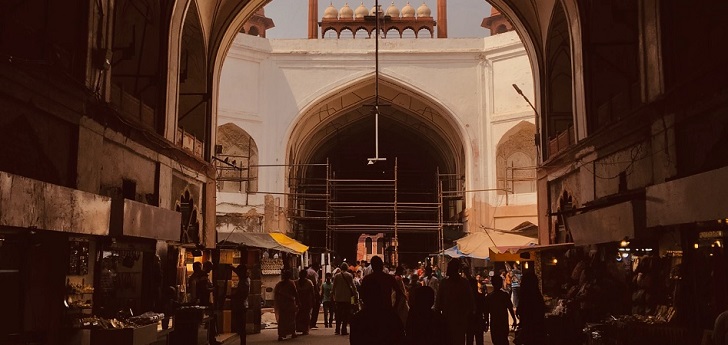Textile stalled on India’s presidentials final stretch
Last bastion of BRIC has closed six weeks of polls to choose the new country’s president, which result will be announced the following Thursday, after the count.

India, the biggest democracy in the world, is heading the final stretch to choose their top leader. After six weeks of voting, the result will be published on the next Thursday 23 May One of the economical challenges that the new prime minister will face is going to be the textile’s industry reactivation within the country, which has stalled its growth in the last years.
Everything suggests that Narendra Modi, current primer minister, will renew its position, although the first surveys won’t be published until the closure of the polls, extending the expectation until Sunday’s late evening. However, local media is highlighting the limited reliability of these exit polls. Certain interest groups, as the stock market, acumulating some weeks of volatility, have been shaked after two months of uncertainty.
India is the second country on world’s Gross Domestic Product (GDP) leading until 2024, according to International Monetary Fund estimations, after China and above the US. The indian economy is expected to represent the 13.7% of global growth. In 2018, India was one of the countries with a greater wealth increment, with a GDP’s rise of 7.1%. If it keeps this pace in 2019, it could even overcome the UK as the fifth world’s biggest economy.
However, despite the fast growth of its wealth, inequalities are still denting within the territory. In spite of being among the ten greatest economies of the world, the citizens’ capita income, of 1,764 annual dollars, lasts the country on the worst position of this rank. United Nations’ Human Development Index (HDI) to measure the progress rate of the country also qualifies India as a bad life quality nation.
The textile, that has been one of the pillars of its economic development, seems to be stalled, especially in confection industry. In the last 2018-2019 exercise, clothing items exports from India dropped a 3.46%, in relation to last year’s same period, until 16,370 million dollars, according to data from India’s Department of Commerce, gathered by Business Standard.
Numbers are not satisfactory, especially if it’s doesn’t take into account the fact that the country’s government passed in 2017 a 60,000 million rupees (850 million euros) budget line, to boost this industry along with a fiscal and productive incentive plan, accompanied by a higher flexibility within labour regulations. Just this sector in currently employing 45 million of workers in the country.
However, the last exercise was the one registering a worst evolution of the exports in years. Despite the subsidies to boost recruitment, India must face a profound modernization of its industrial fabric to compete within fashion supply global arena, in which is not competitive nor in costs nor in efficiency. On the other side, in contrast to Bangladesh or Cambodia, India is not on tariff benefits programs of Europe and the US.
New consume market
India, as well as other emerging economies, has started to turn out attractive in the eyes of international retailers. Despite having one of the lowest GDP per capita of Asia, the country has duplicated it within the last decade. On the other side, the Indian population tends to concentrate even more in the major metropolises. Despite only the 34% of the population is currently living in urban areas, it is expected that these will grow with a 2.37% interannual average rate until 2020.
Clothing items market within the country is also called to grow in the following years. In 2017, India’s clothes sales were positioned in 77,260 million dollars (65,831.1 million euros), 11.6% higher than previous year, according to Statista. The sector is expected to raise its sales to double-digit, until reaching 118.354 million dollars (100,846 million euros) in 2021.
Uniqlo, Esprit, Ermenegildo Zegna, Sonae, Replay, Havaianas or the Spanish brand Mango are some of fashion groups that have doubled their bet for the Indian market in the last year and a half. The most common formula to approach the country has been the alliances with local partners to take advantage of their know how, at the time of expanding, although some of them have opt for entering in Indian fashion firms shareholding.


info@themds.com
Validation policy for comments:
MDS does not perform prior verification for the publication of comments. However, to prevent anonymous comments from affecting the rights of third parties without the ability to reply, all comments require a valid email address, which won’t be visible or shared.
Enter your name and email address to be able to comment on this news: once you click on the link you will find within your verification email, your comment will be published.